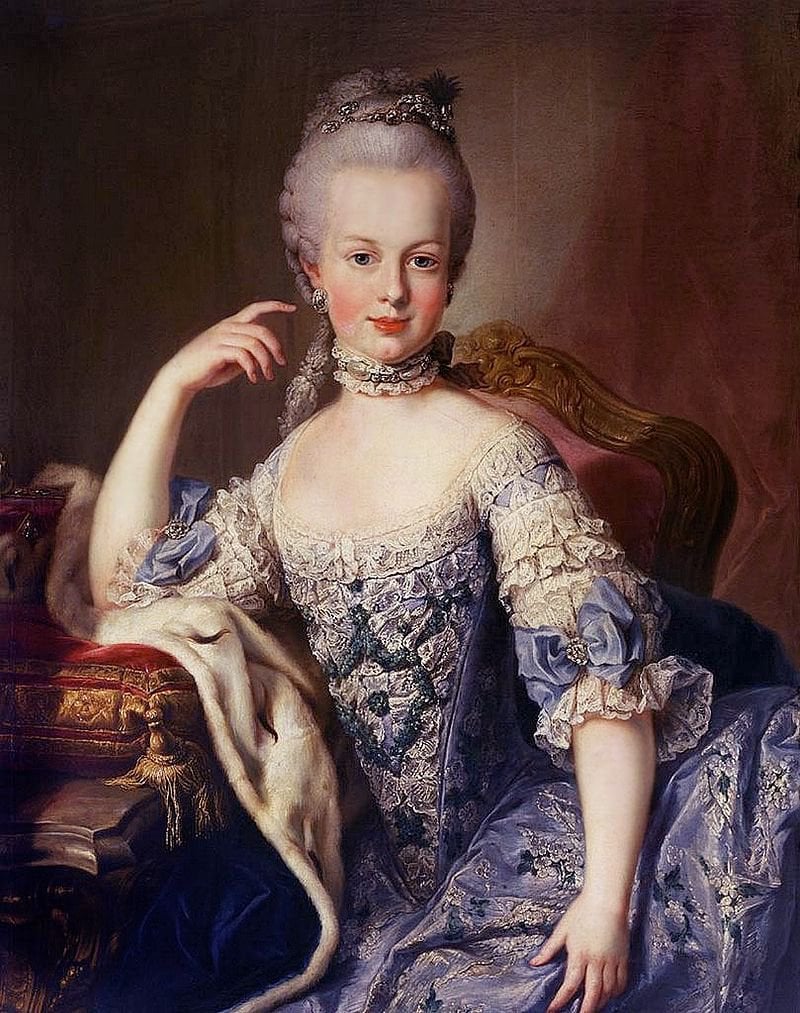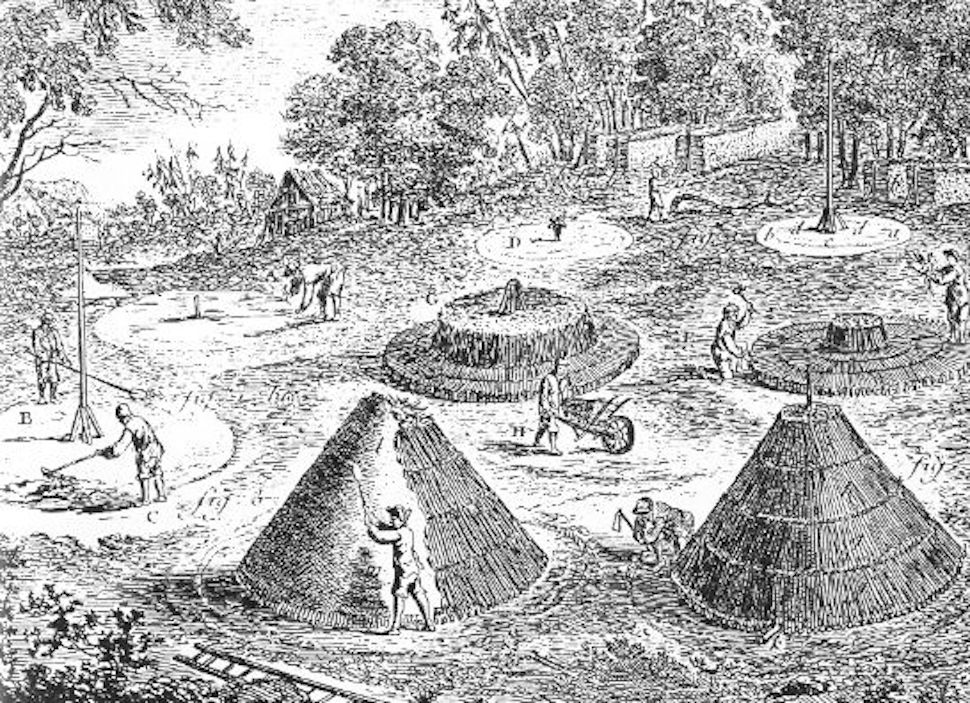
SELINA YANG- APRIL 24 2023
EDITOR: ABBY MORRIS
While strolling through an art museum, the faces of history loom down as a cold reminder of the past. Visual appeal can be universal, but the paintings’ visual language is lost to modern viewers without its historical economic context. Dress is an immediate visual code, not only for aesthetic value, but also to represent economic and political power. With today’s elite sporting black turtlenecks and plain white tees, it is hard to comprehend Marie Antoinette’s ball gowns as a norm for extravagant excess. Throughout the 14th and 18th centuries, every inch of lace represented laborious handcrafting of a dedicated artisan, with even the smallest lace accessory costing a layman’s year’s salary. Entire towns depended on the lace industry. Today, despite being more commonplace than ever before, found on the trimmings of both fast fashion and the runway, lace’s history is obscured by new industrial processes. The rise and fall of lacemaking reflects the trajectory of many arts faced with mass production. Devalued through historic economic shifts, it is impossible to recreate and reimagine the significance of artisan goods.
Centuries ago, artists could define a region’s economic power. Throughout the 14th and 18th centuries, lace making became the basis for a city center’s commercial power, with certain areas growing renowned for characteristic styles of lace weaving. In paintings, lace is intentionally rendered with intense detail, because each style of lace corresponded to a specific region’s identity – similar to brand names today. Just like popular brands, the hot spot for the most intricate lace kept changing. In the early days of the industry, Burano, Italy was famed for pioneering needle lace. Located near modern-day Venice, the coastal trading port helped spread new patterns and techniques across Europe. Moving into the 1700s, these Italian workers began migrating to France and Belgium. Near Alencon, France, nine thousand workers took up residence, attracted to the thriving lace industry.
Some regions saw 30% of their economic activity connected to the lace industry. High supply was due to high demand. Lace’s popularity among the elite represented the sheer power of royalty: to have thousands of people dedicating 15-hour work days to make one inch of your next ball gown. By the late 1700s, during lace production’s peak, some styles required 15 hours of labor per meter – and it would take at least four hours to create a singular accessory. Even still, hand weaving was just a small part of the picture. Before the linen threads even met the lacemaker, flax had to be grown, harvested, woven, and dyed. Weaving patterns had to be designed, sold, and traded. Lace, with its delicate weave and light materials, was not made to withstand the toils of provincial life. Thousands of workers were involved in creating something intrinsically impractical.
Lace seems to be the ultimate example of a luxury good, where demand increases greater than the proportion to income’s increase. One has to break their regular trend of purchasing, and purchase more than they otherwise would. Does lace consumption follow this definition? Lace is ubiquitous throughout royal portraits. Its popularity as a shorthand for social status caused entire towns to produce lace for the sake of a niche customer base. In this, demand certainly increased with income. But is it proportional? The higher social status one achieved, the higher buying power they enjoyed, able to afford yards and yards of lace for one garment. The tremendous cost of lace seemed no issue – just a drop in the bucket. Looking back, its ubiquity makes it seem like just another cloth, when in reality, it was very intricate and intensive. In this, representing a level of wealth concentration is difficult for the layman to imagine.
Just because lace itself was luxurious that doesn’t necessarily mean the people making it were rich. The lives of the laborers themselves were a constant contradiction. Largely female, some started training at age 9, weaving in dim and stressful conditions because fiber had to avoid light. At the same time, their work gained massive prestige and high demand. Because of their work’s intensity, it fetched high prices, leading to the families of these young lacemakers being well paid. The position of a lacemaker became so desirable that one town limited people over the age of 16 from participating in lace making so that other jobs would not be left empty.
Then came along the Stockinette machine. At first, it was an unassuming contraption that required as much tedious handling as handweaving. But as with many inventions, once it survived into the 19th century, the industrial revolution granted it automation. The Stockinette was now able to knit fabric with holes throughout – the base of lace. In 1809, John Heathcote built off this innovation, producing the first machine to be able to automate wide net fabric. These large sheets of lace that didn’t unravel. The process that once took one handweaving lacemaker one year to to make one yard, was now sped by machinery.
Over the next 25 years, the price of lace fell from 5 pounds to a mere 5 pence per yard. Lace’s luxury status was devastated, as it became more affordable, with demand no longer being as large of a proportion to income. However, rather than decimating the industry itself, employment increased because of lace’s creative new uses for commons. People now enjoyed lace lingerie, lace table covers, and lace curtains. No longer relegated to the elite, by the mid-1800s designers were making entire lace garment sets for the public, when in the past, one ruffle would have cost over a year’s salary. When cheap substitutes are available the demand for handmade lace plummeted. Lace turned from a textile with a complex artisan background and prestige, into another product to be ground out at factories. At the same time, its accessibility led it to be more widely enjoyed.
While Heathcote is renowned for maintaining high wages for his machinery technicians, the principle of the machine itself was a threat. In 1816, Luddites rioted on Heathcoat’s Loughborough factory, setting fire and destroying 10,000 pounds worth of equipment. Even still, he grew into one of the key producers of lace in England, patenting his invention and spreading an additional 600 machines to manufacturers across England. By 1900, the handmade lace industry was almost gone, save for pockets of associations trying to protect the artistry and history of it. From a USDA report, lace saw an increase in imports for consumption in the 1920s, only to dramatically decrease in the 1930s and onwards due to world wars. In war, when spending needs to be cut back the most and luxuries are the first to go. In lace’s dramatic decline, it is clear that it wasn’t seen as a necessity, and the demand of the upper class could no longer be the sole sustainer of its production.
Despite this, the economy does run in cycles. Years pass, and it gets further from equilibrium, only to run back closer, and again. After war, eventually, the economy bounces back. The decline ended in 1948, with imports jumping from 40 to 205 thousand pounds in just one year. In 2018, the global lace fabric market was worth $31 million dollars, and predicted to expand at a compound annual growth rate of 5.8% until 2030. Similar products, such as embroidered fabrics, were only worth forecasted to grow by 3.3%. Throughout lace’s tumultuous history of turning from a sign of royalty to a household item, these numbers show that there is a greater interest and demand for it than ever before.
However, the perception of the items that surround our world are irrevocably changed. Lace consumption has gone up in ways unimaginable to an artisan of the 1700s. At low cost and high quantity, items are more accessible than ever before. They are more accessible, yet more alienated, than ever, as no second thought is given to what it took to make them. With consumers used to low prices, and unwilling or unable to purchase at prices that would support sustainable wages and environmentally friendly materials, the same laborious conditions still occur today in sweatshops.
Mass production isn’t inherently negative – it has helped increase the standard of living across the world, and saved lives through helping increase sanitation infrastructures. In this, individuals aren’t helpless, but can make an effort to consume more consciously. In the case of lace, some contemporary artisans still continue the handmaking tradition for the sake of historical preservation and the goal of this labor isn’t to make a profit. With cheap alternatives, handmade lace’s high price that reflects its man hours is no longer seen as worth it. In this, some consumers trade higher prices for, what they believe as, higher personal value, when cheaper alternatives are available. The artisan industry is rapidly increasing, with the global industry valued at $466 billion in 2020, and predicted to reach $847 billion by 2027. Consumers are interested in this alternative model of consumption, one where they have control in choosing who to support with their money.
The developing world is the second largest employer in the handicrafts industry, making up 65% of global artisan activity. Similar to historic lacemaking, here, women are the largest producers. While traditionally informal, artisan cooperatives are seeing greater popularity. However, despite this growth, artisans are faced with the consequences of mass production. Wholesalers refuse to compensate according to the work’s value, while designs are stolen by larger corporations who recreate handmade designs at a mass scale. Through forming cooperatives, individuals have greater access to global marketplaces, financial resources, and in some countries like Morocco, exclusive tax benefits.
Within a couple centuries, it has gone from the ultimate status symbol, showing that one can buy people’s time, to a nicety for all. Along the way, new techniques of mass production allowed for greater accessibility. However, as lace’s luxury value dropped, so did the value of its originally artisan labor as cheaper, less intensive alternatives arose. Today, for every modern nicety it is all too easy to forget that people are still involved in production, whether be an artisan, factory worker, or both. Through diminishing lace as a status symbol, more people can appreciate lace as a textile, art form, and symbol of history.
Featured Image Source: Smithsonian Magazine
Disclaimer: The views published in this journal are those of the individual authors or speakers and do not necessarily reflect the position or policy of Berkeley Economic Review staff, the Undergraduate Economics Association, the UC Berkeley Economics Department and faculty, or the University of California, Berkeley in general.



